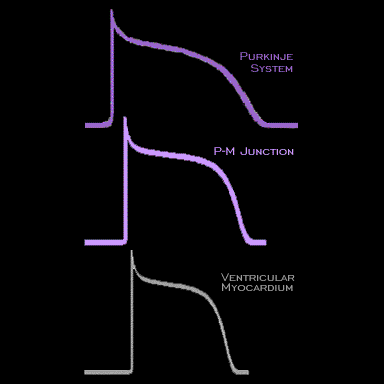
The action potentials having the longest duration occur in fibers of the His-Purkinje system. As the Purkinje fibers approach the ventricular myocardium, their electrical activity exerts an electrotonic effect on the ventricular cells and vice versa. Thus, at the Purkinje fiber- ventricular muscle junction (P-M junction), the duration of the action potential is less than that of the Purkinje fiber action potentials but longer than that of the ventricular fiber action potentials.
